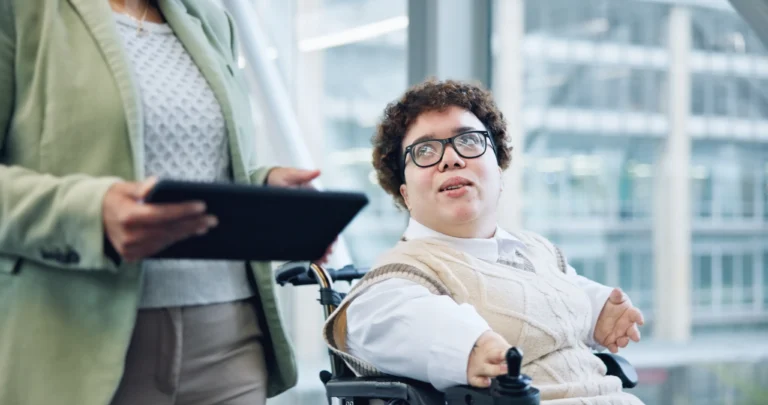If you have a disability, smart technology can completely transform how you live at home.
Imagine being able to control your surroundings without relying on others. Turn lights on and off without moving. Set up automated sequences that switch on at your command. The options are endless!
Embracing technology is a fast track to greater independence and freedom. Today we’ll explore some of the exciting smart technologies available and the connected devices that may make life a little bit easier.
What are smart products?
Smart products are appliances or gadgets that have built-in wireless technology that allow them to be connected to a device such as a home hub, smart speaker, phone or tablet. They can then be conveniently controlled by a voice assistant, or at the touch of a button.
Benefits of smart home technology.
- Freedom and independence
- Can be customised for you
- Makes it easier to complete daily tasks
- Feel safer at home
- Save energy and money
- Sequence activities with automation.
Smart hubs – the control centre of a smart home.
A smart hub is a device used to control all of your connected smart products like switches, cameras and appliances. Smart hub options include Google Nest Hub Max, MyPlace, Wink Hub 2 and SmartThings.
Depending on the type of hub you choose, it can be controlled by touch, a smartphone or tablet, or by connecting it to a smart speaker – such as Apple HomePod, Amazon Echo or Google Home. That means you can create a system to suit your preferences, needs and abilities.
If you’re tech-minded, setting up a simple home system might be a fun project. If you’re not, reach out to a specialist installer to build it for you.
Keen to find out more? Choice and Bunnings have some excellent guides to get you started.
Smart technology devices.
Hundreds of devices can be connected to a smart technology system. We’ve covered a few of the most common options below.
Smart lock.
With a smart lock system, you’ll no longer have to share keys or passcodes with visitors or carers. You and your visitors can use a smartphone to unlock the door, making it easier for multiple people to come and go to provide care. Multiple users can be set up easily and there is no need to change codes or keys when carers change.
Smart doorbell.
A smart doorbell makes it easy to monitor the entry of your home using a camera connected to a phone or tablet. A motion sensor can alert you to movement and trigger an audible or visual notification on your device. Smart doorbells are great for people with mobility and hearing impairments but may not suit people with vision impairment.
Smart thermostat.
Save money on heating and cooling while keeping your home at a comfortable temperature with a smart thermostat. Many support Amazon Alexa, Apple Siri, and Google Assistant voice commands, making it easy to change settings.
Smart window coverings.
Opening and closing blinds and curtains can be difficult for many people with physical disabilities. Window coverings with smart technology built in are expensive. However, a universal blind automation kit such as MySmartBlinds can inexpensively transform ordinary blinds into iOS (Apple) and Android compatible smart automated blinds.
Smart plugs.
Smart plugs turn ordinary powerpoints into smart home technology so appliances can be controlled with an app. Turn switches on and off from anywhere, set up schedules or go hands free for items such as kettles. Bunnings carries an extensive range of smart plugs which are easy to install without an electrician.
Smart lighting.
Normal light switches can often be retrofitted with smart devices and connected to your device or home hub, or custom lights can be installed.
Can you pay for smart technology with your NDIS funds?
Smart technology is considered “assistive technology” by the NDIS. Like any other NDIS purchase, the “reasonable and necessary” test applies.
The purchase must be:
- Related to your disability
- Value for money
- Likely to be effective for your needs.
There are also different requirements depending on the cost and type of item. For more information, check out Assistive technology explained.
Have you visited our Provider Directory?
If you’re looking for an AT supplier or provider, visit the Leap in! Provider Directory! Use the filters to refine your search and choose from a range of service types, including assistive technology.


